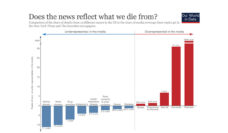With the aging of the US population and a growing number of baby boomers reaching senior citizen status, increasing attention is being paid to options around end-of-life care. Oregon was the first state to pass legislation, the Death with Dignity Act (DWDA), that allows physicians to prescribe medications to be self-administered by terminally-ill patients to hasten their death. Since then, eight other states and jurisdictions have passed similar laws, and 19 states are considering such legislation (Montana allowed the option by Supreme Court ruling). As more states consider DWDA, the debate continues over the ethics of such laws, whether they protect vulnerable patients, and the impact on medical practice. State health departments can play an important role in collecting data on DWDA participation to inform the debate.
Oregon’s DWDA, passed by a citizen’s initiative in 1997, requires the Oregon Public Health Division to collect data on DWDA prescriptions and issue an annual report. With external stakeholder input, we developed a reporting system based on three sources:
1) At the time a DWDA prescription is written, physicians submit the signed written request form and a checklist certifying that all the required patient qualifications have been met (e.g., terminal illness with prognosis <6 months; age >18; Oregon resident; able to communicate a health care decision).
2) These patients are matched with death certificates from our vital records department to determine when the patient dies. Death certificate information includes basic demographics (e.g. age, sex, education level).
3) Physicians of deceased patients complete a follow-up form, with information on whether the patient ingested the medications, circumstances surrounding the death (e.g., time after ingestion until death), and reasons the patient requested the medications (e.g. concerns about quality of life, being a burden on others).
From 1998 through June 2017, 1,857 terminally-ill Oregonians were prescribed medications under DWDA, and 1,179 (64%) died from taking the medications. During this period, 215,983 Oregonians died of similar underlying diseases, leading to a DWDA rate of 54.6 per 10,000 deaths. The rate of DWDA prescriptions and related deaths has increased over time.
State health departments can play an important role in collecting data on DWDA participation to inform the debate.
Patient characteristics have remained similar since 1998: median age was 72 years (range 25 to 102); 52% were men; 96% white; and 72% had some college or higher education. Rates of participation were highest in patients age 55-64 years and decreased with increasing age. DWDA participation was 10 times more likely in patients with a post-baccalaureate education than those who did not graduate from high school. The majority of DWDA patients had cancer (77%), followed by amyotrophic lateral sclerosis (ALS; 8%). ALS patients had the highest rates of participation (439.3 per 10,000 patients) followed by those with cancer (65.5 per 10,000). Most patients cited loss of autonomy (91%) or decreasing ability to participate in enjoyable activities (89%) as reasons for requesting DWDA.
DWDA participation among terminally-ill Oregonians has increased over the past 20 years but remains low compared to all Oregon deaths (0.2% of all deaths). Patients who were younger and had higher education levels were most likely to participate, suggesting that the most vulnerable patients are not being adversely impacted. Most common reasons for participation were existential in nature rather than concrete concerns about finances or inadequate pain control, which are more amenable to policy interventions.
DWDA is only one option within a spectrum of end-of-life options, which include cessation of eating and drinking, withdrawal of life support, and terminal sedation. While Oregon law mandates collection and reporting of DWDA participation by the Public Health Division, no similar requirement exists for these other options. To truly understand decision-making at the end of life would require an in-depth study more appropriately done by academic medical researchers with expertise in palliative and hospice care. Regardless of beliefs about the ethics of DWDA or whether it should be a legal option, the goals of all parties should be to ensure that terminally-ill patients have access to excellent end-of-life care.
Photo by Cristian Newman on Unsplash














